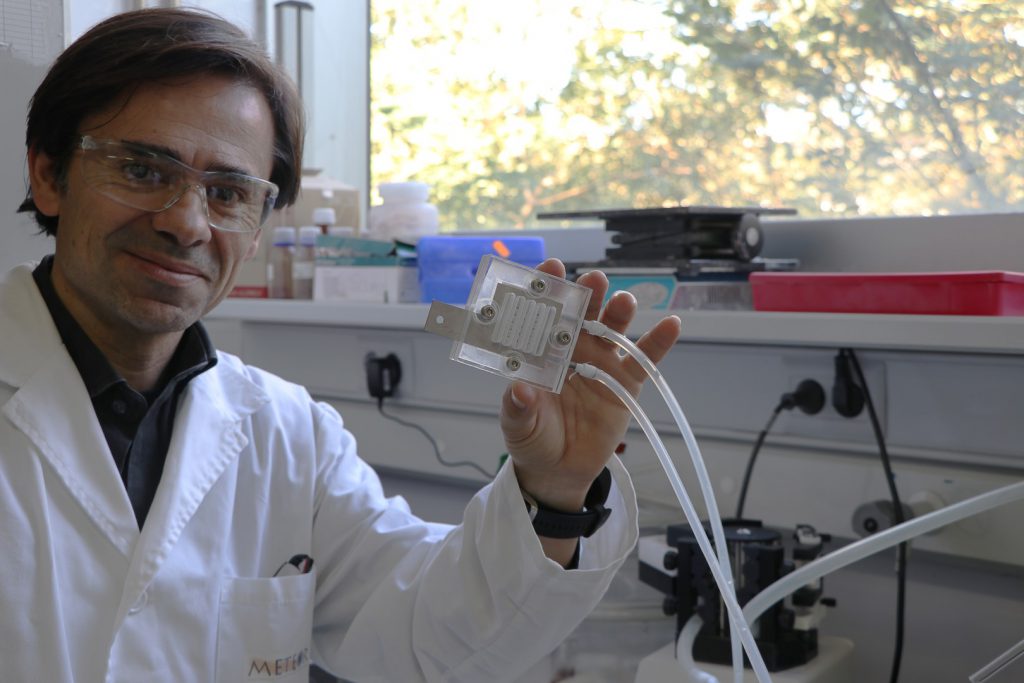14/03/2018
A new device produces clean energy ten times faster than biomass
Researchers at the Department of Chemical Engineering of the Universitat Rovira i Virgili patent a system that imitates tree leaves by absorbing C02 at high speed and turning it into biofuel

Researchers at the Department of Chemical Engineering of the Universitat Rovira i Virgili patent a system that imitates tree leaves by absorbing C02 at high speed and turning it into biofuel
The workings of plants have inspired the creation of a new device that can absorb CO2 and turn it into biofuel. Researchers at the URV’s Department of Chemical Engineering, headed by Ricard Garcia-Valls of the MEMTEC research group, have imitated the natural process of photosynthesis and have improved it in the laboratory. Their research has led them to develop a prototype that is between four to ten times more effective than the leaves of a tree at photosynthesis and at accumulating CO2. It obtains a specific compound and produces energy at least ten times quicker than biomass.
Trees absorb CO2 in the atmosphere through pores in their leaves called stomata. After analysing this model, the researchers designed a membrane with artificial stomata to which compounds have been applied that, when in contact with water, trap CO2 molecules on the surface. In trees, the CO2 concentrated in leaves turns into organic material. The device designed by the researchers uses this concentration of CO2 to obtain a specific compound: formic acid or methanol, which can be used to make clean fuel with the help of solar panels and can be stored to produce electricity whenever it is needed.
This research line is not new; in recent years various devices have been built for capturing CO2. However, the prototype designed at the URV has new advantages: it produces energy faster than most existing products, thus optimising the capture of CO2 and obtaining more energy in less time.
The researchers have already built a prototype of the device and applied for a patent, which will be jointly owned by the URV and the Centre for Chemical Technology (CTQ), and they are currently working to optimise it and exploit its potential.
This research could be used in commercial applications such as substitutes for small solar batteries, or batteries that recharge themselves with renewable energy for telephones, computers, tablets and, even, cars and houses.
Reference: A.Nogalska, A.Zukowska, R Garcia-Valls. “Atmospheric CO2 capture for the artificial photosynthetic system”. Science of The Total Environment. Volume 621, 15 April 2018, Pages 186-192. DOI: 10.1016/j.scitotenv.2017.11.248
